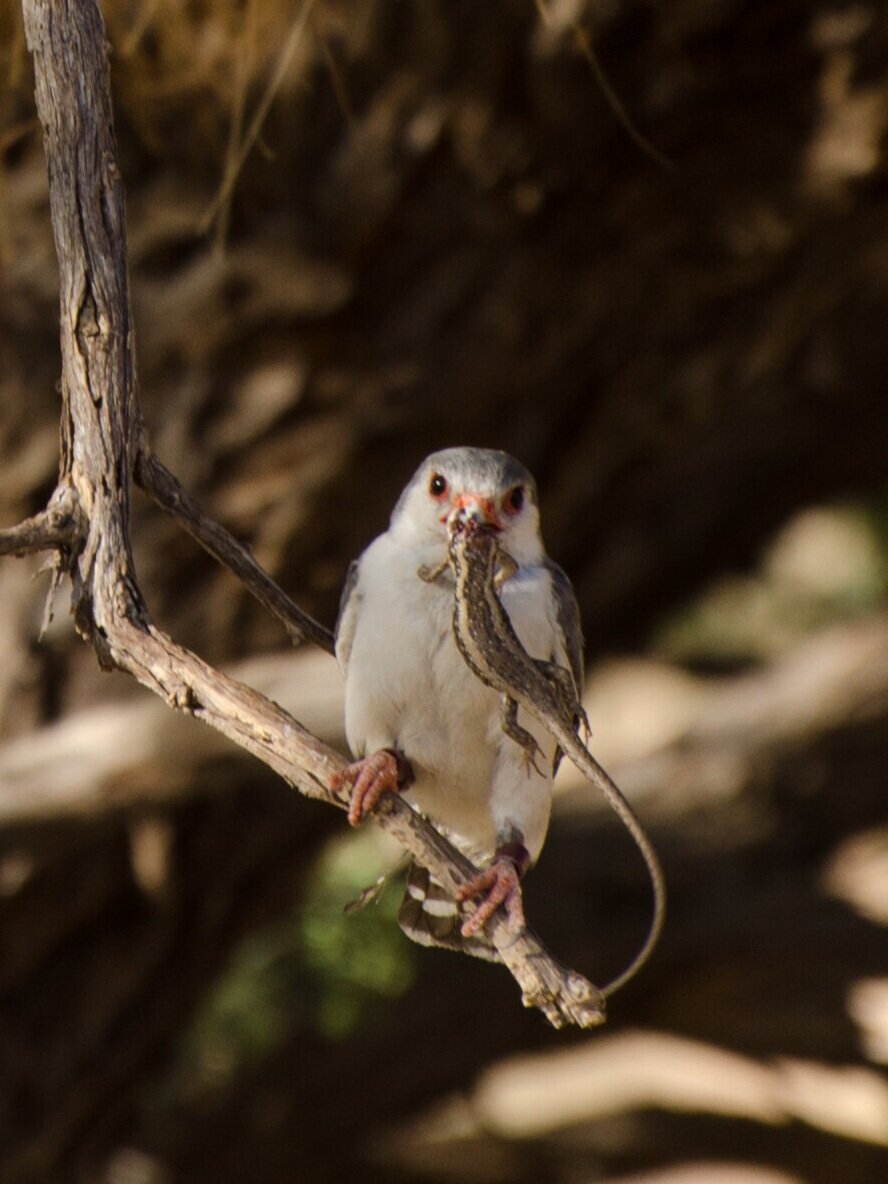

Skinks Avoid Danger by Eavesdropping on Bird Alarm Calls
The Kalahari tree skink gains a lot from associating with sociable weavers. These small birds build big communal nests that offer skinks increased opportunities for basking and foraging. However, weaver nests also house a major predator of skinks, the pygmy falcon. How do Kalahari tree skinks manage living next door to their predators? The answer appears to be by eavesdropping on their neighbors.
Read the whole story at my Animal Minds blog: Skinks Avoid Danger by Eavesdropping on Bird Alarm Calls.

Pain Resistance in Mole-Rats
Naked mole-rats are weird. Native to East Africa, they live underground in highly ordered and hierarchical colonies with a single breeding queen, more like ants or termites than mammals. Some of their most striking physiological adaptations include an extraordinarily long lifespan (30+ years), apparent resistance to cancer, and resistance to extremely low levels of oxygen and high levels of carbon dioxide.
But it turns out naked mole-rats are not completely alone; they come from a family of weirdos. In my latest Animal Minds post, I discuss what researchers have discovered about pain insensitivity in naked mole-rats and some of their close relatives.
Read the story here: Pain Insensitivity in Mole-Rats.

Marine Mammals Actively Explore Environment with Whiskers
Whiskers aren’t just decorative. Whisker touch is an active sensory system. Most mammals have whiskers and a few, like rats and shrews, are whisker specialists – actively controlling their whiskers to guide exploration, foraging, and navigation. Pinnipeds (the group that includes seals, sea lions, and walruses) also have highly prominent and sensitive whiskers. Are they as adept at using their whiskers as land-living whisker specialists?
See my latest Animal Minds blog post: Marine Mammals Actively Explore Environment with Whiskers.

Cross-Modal Object Recognition in Bumble Bees
The ability to experience an object in one sensory modality and later recognize it in another is called cross-modal object recognition. It’s actually a highly complex cognitive capacity thought to be limited to vertebrates. Now, a group of researchers from Queen Mary University of London and Macquarie University in Australia show that bumble bees are capable of performing this task, raising questions of bees’ mental imagery and awareness.
Read my latest post at my Animal Minds blog: Bumble Bees Can Recognize Objects Across Senses.

Can Animals Predict Earthquakes?
There have been reports of abnormal animal behavior prior to earthquakes since ancient times. Now, new research finds evidence that animals collectively react to earthquakes before they happen.
Read my latest Animal Minds post: Can Animals Predict Earthquakes?
